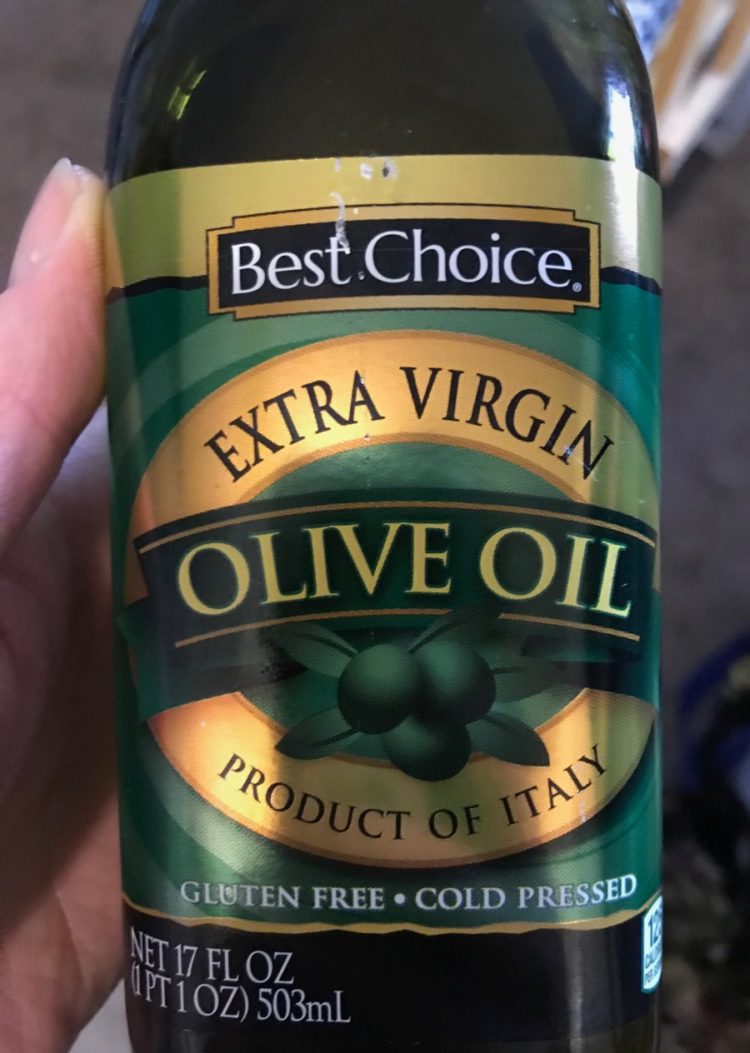Many current health food plans and traditional societies promote the use of homemade soups, stocks and bone broths for health.
Broths are recommended for followers of the Paleo diet, Primal diet, Weston A. Price Foundation eating program, and GAPS diet. One nutritionist I know called it “liquid food.” Depending on how its made, it can feed the body trace minerals, calcium, chondroitin, glucosamine, salts, healthy fats (from marrow) and more. It can help nourish bodies affected by digestive conditions like IBS, IBD, and “leaky gut”, also called intestinal impermeability.
One nutritionist I know called it “liquid food.”
The photo below shows a cooled beef bone broth/soup that has gelled nicely — so much that its holding its form on a spoon. (This is how King Henry VIII ate gelled desserts!) This is from cooking it with cartilage on the beef knuckle bones. Cartilage that will help your stock to gel is also found in pigs feet, and chicken and turkey wings. (You will still need meat pieces in there to make it taste good, though – FYI)

I wanted to let you know how to quickly and easily cool large quantities of soup, bone-broth, and stocks. Making soup, bone-broth, and stocks isn’t that hard, but sometimes the “putting away” process can take some time. These are often cooked in large stock pots, which can make it hard to cool off a lot at once. Cooling and storing in a pot can take 20-45 minutes, not all of that time is “active time” – you will be waiting for the liquid to cool down. There are options below to cut down that time.
Do you like to read healthy recipes, nutrition info, and herbalism tips, and more? Then sign up for my free email newsletter here in ten seconds.
Option 1: Sink Cooling
As an option, you could pour your soup into two smaller clean pots or bowls, and cool in both sinks. This is a good idea if your stock pot has a thick bottom that holds the heat.
First, clean your kitchen sink, and close the drain. Cover your soup/stock pot with a lid, and place in a clean kitchen sink filled 1/2 full of cold water. Add more cold water, reusable ice packs, or ice to bring the water level up higher on the edges of the pot. Keep the water 1-2 inches below the top edge. (You don’t want sink water in your soup!).
You also don’t want the soup pot to float and tip over inside the sink. if it starts to float, remove the pot, and then drain out a little bit of the cold water. Then put the pot back into the sink.
Wash your hands with soap and water. Then check the pot’s soup/stock temperature in 15-20 minutes, by dipping your finger into it. (I recommend setting a timer, so you don’t find your stock the next morning! If you do that, you’ll have to throw it away.) If it’s lukewarm, it’s ready to put into smaller containers or jars, and then into the fridge. If it’s still really hot, you could move the pot, drain the water, and refill with cold water again. Lower the pot back into the water again to cool for another 15-20 minutes.

Store in the fridge in the pot, or move to mason jars or other storage. I use a wide metal funnel (shown above) that fits the mouths of the mason jars. These are great! This makes pouring stock into jars, and storing the stock, much easier. It’s also safe with hot liquids, and washes up (forever) in the dishwasher.
I prefer the straight-sided mason jars in the two cup size (one pint), because you can fill them to the top and freeze them. The jars with sloped “shoulders” can only be filled two thirds full, below the slope. This is because frozen liquids expand, and using the sloped jars full of liquid can break the jars.
I recommend labelling the jars for current or later use. Broth and soup will last about 3-4 days in the fridge. If you can’t use it all in that time, freeze some for later. (See Freezing Stock, below, for info about “head space”)
Option 2: Counter Cooling
Remove large bones and vegetables that have “given their all” for your stock flavoring, and discard them. A large strainer works well for this. Then place the now-empty strainer over a large clean bowl (metal is preferred). Pour the stock into the bowl. Cover with a splash guard and cool for ten minutes (by timer). (It would be a mistake to leave warm broth lingering at hot-warm temps for a long while, as this is the food danger zone.)
Pour 1-3 cups ice into the stock a little at a time (the less the better). Stir around until lukewarm, then cover and cool in the fridge. A large pot lid turned upside down, or large plate over the pot, can work well to cover, but aren’t leak proof.
Glass mason jars are great for storage, too. If your stock is still warm, place a large metal spoon into the jar before pouring your warm (not too hot) stock into the jar. This will prevent them from cracking. (shown below)

Freezing Stock:
To freeze jars, leave room for expansion as it freezes – about 1″ below the jar’s “shoulder” or 1 to 1.5″ below the jar lid.
I hope you enjoyed this article, and that it saves you a lot of time.
| Are you interested in homeopathy? I have two charts for sale: one for home First Aid using Homeopathy, and another for Homeopathic Cold and Flu Care. These are available as printed and laminated sheets or instant digital downloads. Read more here: |
| Homeopathic First Aid Chart/Guide: Digital Download | Physical Printed and Laminated |
| Homeopathic Cold and Flu Care Chart/Guide: Digital Download | Physical Printed and Laminated |
